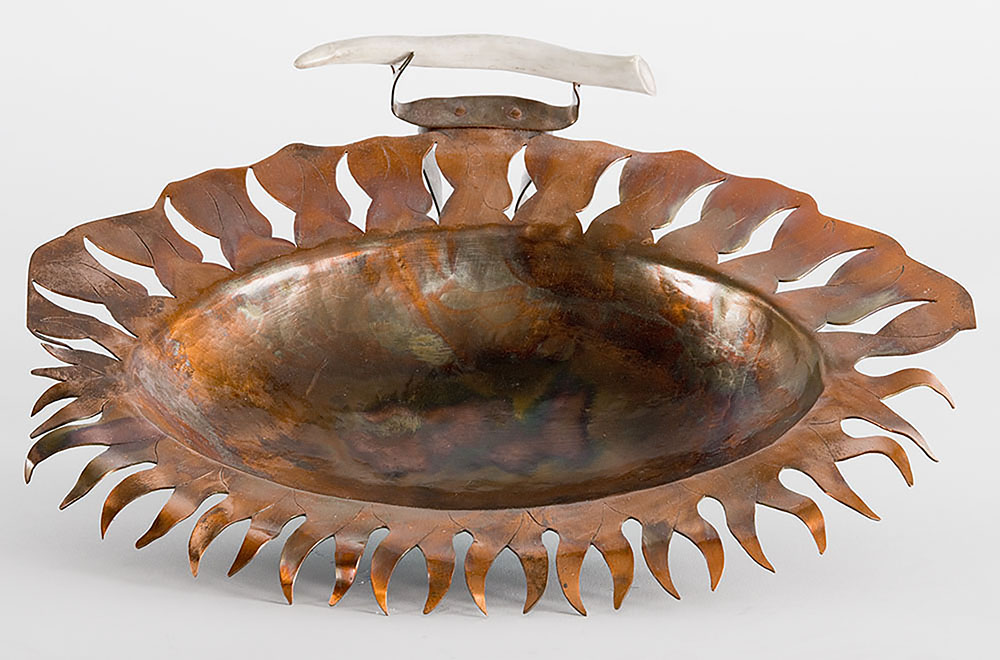Exploring the Global Affairs Canada Visual Art Collection
Jan 24, 2022
by Tiffany Ayalik

In a land where the sun and moon have little to do with night and day, Inuit have cultivated a special relationship with light and dark. In the spring through to the height of summer, we are blessed with 24-hour light. The sun ebbs and flows around the sky in an undulating track but stays above the horizon. Traditionally, the Inuit day was not structured by tasks corresponding to specific times. We would eat when hungry, sleep when tired, keep busy and work whenever it needed to be done. These tasks had little to do with the time of day and were centred more around the rhythms of the seasons, animals and the land.
In some places in the North during the winter, the sun is not seen for months. Darkness is only broken by the crescendo of twilights, subtle changes of inky purples, deep blues and never-ending black. Life must go on in the darkness, chores must get done, food must be hunted, fun must be had. Dark and light are neither good or bad, right or wrong, they just are in the Arctic. Inuit cannot shy away from the darkness, there is no pause to life in the winter.
The qulliq (oil lamp) is a marvel of Inuit innovation, providing light, heat, a cooking source and a deep spiritual comfort that emanates from a flickering flame. The Qulliq of Life, a radiant piece created in 2017 by Mittimatalik (Pond Inlet), NU, sculptor Gary Kalluk, offers that same warmth and light. Where most traditional qulliit are smooth and carved out of stone, Kalluk chose copper as his foundation. The lip where a wick would be carefully tended has been reimagined in Kalluk’s qulliq, set ablaze with copper flames. The variations in the colour of the metal creates a swirling microcosm in the well of the lamp, allowing the eye to get lost in a liquid pool of molten copper. The antler taqquti—the tool wielded by knowing hands to tend the flame, ensuring it doesn’t get too high and smoke—is triumphantly held by two copper arms, an almost sentient helper to the flames. From one angle, the smooth curves of the taqquti look serpentine, at others, perhaps the gentle smile of a beluga.
The quiet power of the Qulliq of Life lies in the eternal nature of its flame. This light will never need tending, the oil will never need refilling, it is its own light source. Through the warmth and malleability of copper, Kalluk has created an orb of light not unlike the sun; a solar-flaring, three-dimensional force that even as it rests firmly on its base, appears alive and swirling to the eye.
This burnished lamp, forever lit by Kalluk is not a counter to darkness, but a companion to it. The darkness is not an evil force that must be resisted, it is a reality that must be embraced. Kalluk has provided a tool to reflect and refract the light around us; a beacon to remind Inuit that we must continue to inhabit all the spaces in between flame and shadow.
—Tiffany Ayalik is an Inuinnaq artist, filmmaker and singer from Yellowknife, NWT. Her family comes from Kugluktuk, NU. Tiffany and her sister Inuksuk Mackay collaborate as the internationally touring throat-singing band, PIQSIQ.
This piece is part of a collaborative project between Global Affairs Canada (GAC) and the Inuit Art Foundation that brings together Inuk writers and Canadian ambassadors to discuss pieces of Inuit art from the GAC collection, on display at Canadian embassies around the world.
Find out more on Inuit Art Foundation website.


